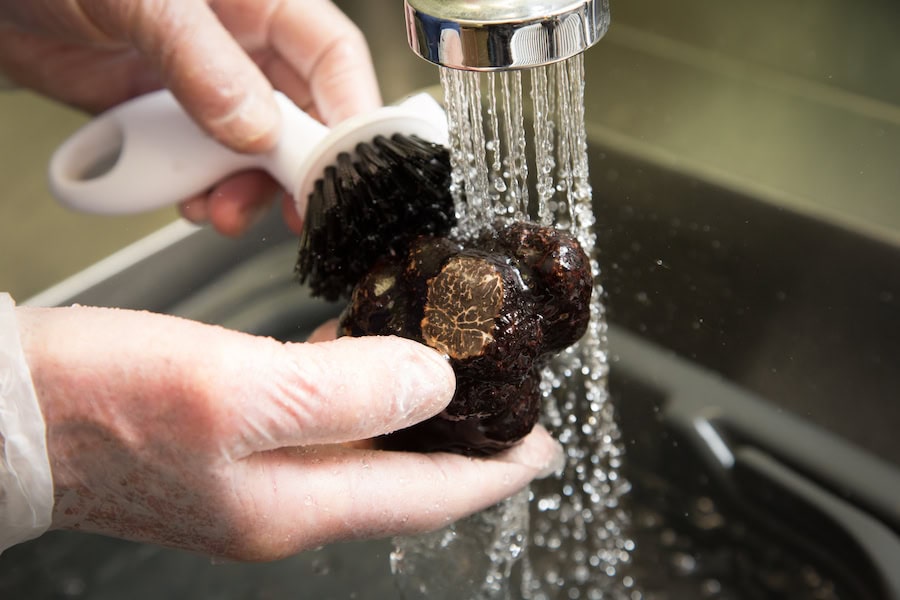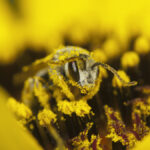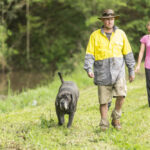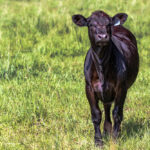While recent widespread rain in the state is bringing hope that the drought may finally…
New era for truffles in the highlands
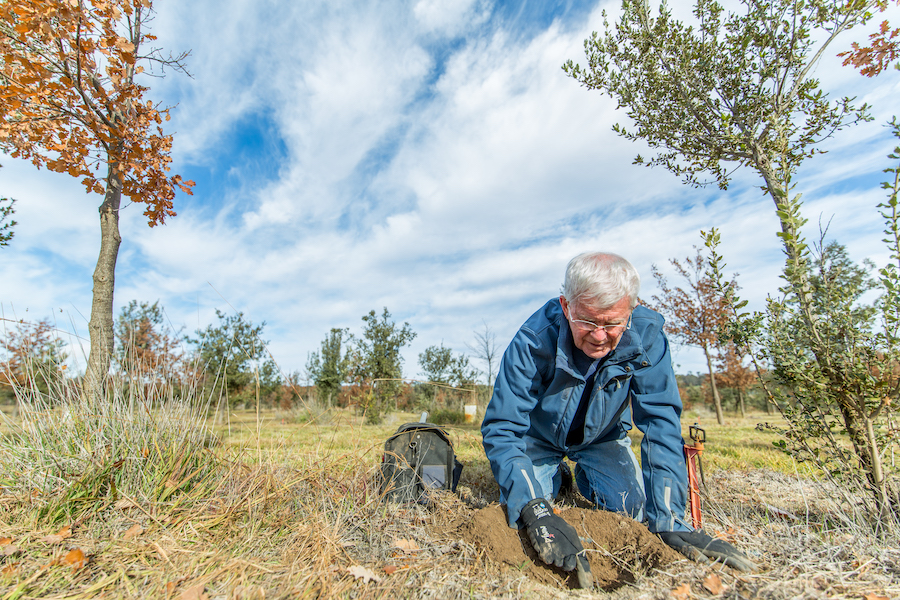
When Wayne Haslam set up Blue Frog Truffles after retiring from a long career in engineering and international project management, it was supposed to be a side business that could at least pay for itself, and one that he would enjoy working on. Ironically, as many find in retirement, Wayne is busier than ever, and he continues to play an instrumental role in the development of a new era for truffles in Australia.
With extensive research and development being in his blood, it�s no surprise that before retirement Wayne methodically researched his entrepreneurial retirement venture.
�I was warned off livestock farming as it would have been taking too much on, and then I looked at horticulture and contract grape growing, but was talked out of that as a retirement prospect by friends who were wine makers and thought it was far too labour intensive.�
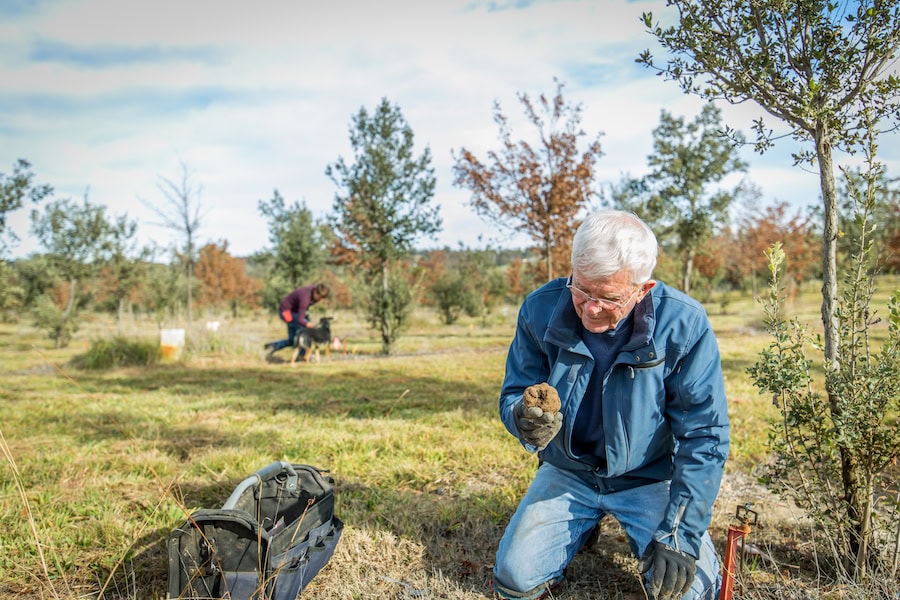
Wayne then looked into olives. �But it was early days for the Canberra region and there were no firm recommendations on varieties and little in the way of market development,� he says. �Then I looked into truffles and soon realised there was a lot less operational management required. Further research showed that the Canberra region climate closely matched the best production areas in Europe, so I planted inoculated trees.�
For those lacking in truffle knowledge, the fungus infects the roots of the trees and lives in a symbiotic relationship with the tree, breaking down minerals in the soil, otherwise unavailable to the tree. In return the tree provides sugars and carbohydrates for the truffles, which are the annual fruiting body of the fungus.
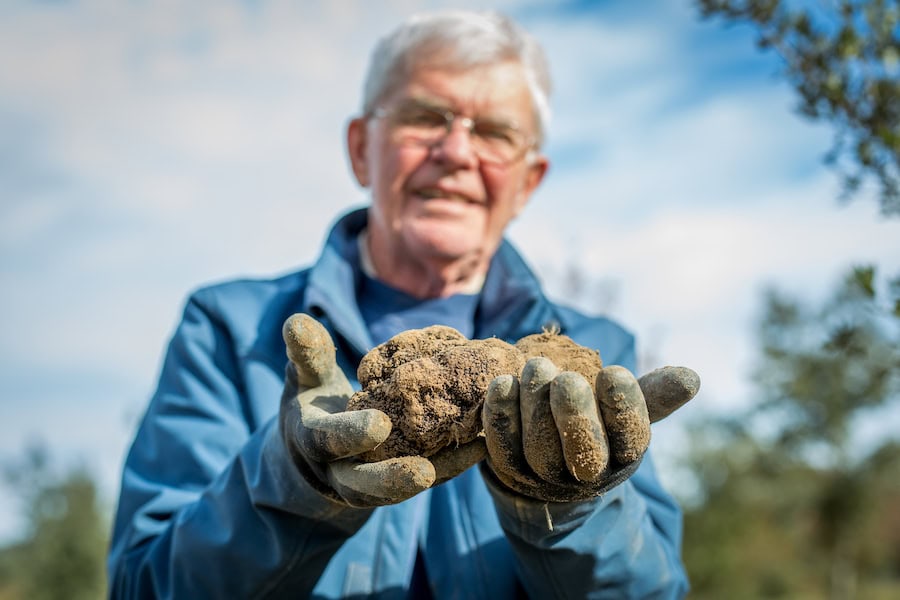
A standardised testing scheme has been refined and introduced by the Truffle Growers Association in Australia, where black truffle inoculation of hazelnut and/or oak seedlings can be validated and evaluated prior to purchased by prospective growers. Before this, it was really down to being lucky if you had the right trees and conditions for truffles to grow on your land. French black truffle are an introduced species for cultivation in Australia. They occur naturally in many countries in Europe � primarily Spain, France and Italy, where they have long used dogs and pigs to find the truffles.
�The market was a concern but the idea was enchanting � to grow a fungus with the most exotic culinary aroma in the world,� says Wayne. �To propagate naturally, truffles release aroma to attract animals to consume them, and then they scatter the truffle spore in their droppings. Truffles are the winter food for many small animals in forest systems throughout the world, and if this didn�t happen, truffles would cease to survive and spread,� he explains. “When cultivated, we don�t have to rely on that mechanism.”
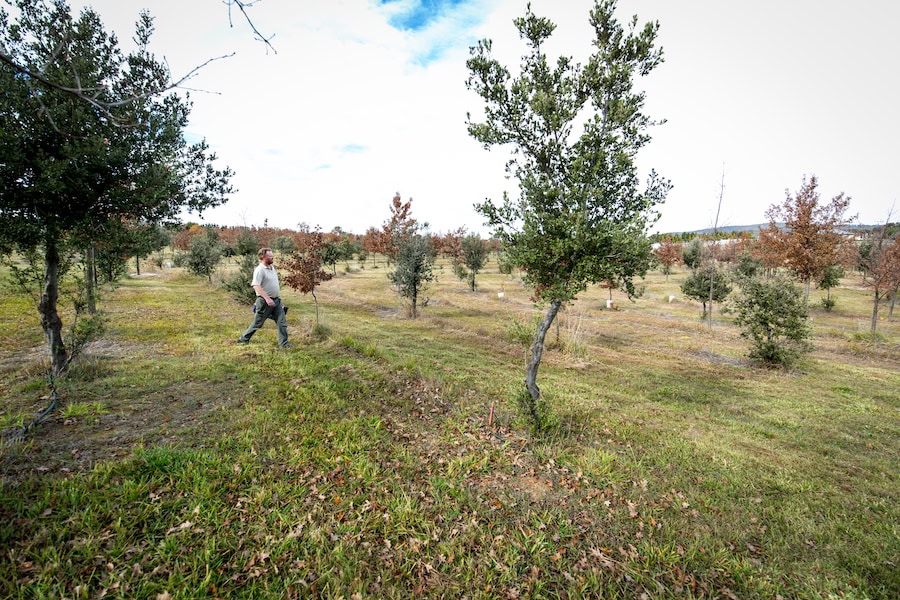
A new era: full steam ahead
Wayne planted 900 trees in 2003 and was very excited to find the farm�s first truffle in 2007. �This prompted me to plant an additional 900 trees in 2008,� he says. �And in the meantime I became disenchanted with the secretive and uncooperative nature developing in the industry here. Back in the 1990s, it was virgin territory and growers wanted to monopolise the market, so they didn�t share any information with others. I couldn�t get my hands on much information and it was incredibly frustrating.�
Never one to sit back and accept the norm, in 2006 Wayne called around and told everyone he knew might be interested, that he was organising a gathering in Canberra for people to share knowledge about truffles. �About 60 people turned up so there was obviously a lot of people in the same boat as me!� he says. �After that meeting I established the Australian Truffle Growers Association. I was the President for the first four years, and the Association is now Australia-wide.�
This association is now recognised by AgriFutures Australia as the truffle industry peak body in Australia. �AgriFutures has been very supportive of the industry, to the benefit of both small holder and larger growers, with formalised grading systems across the industry and evaluated seedlings for new plantations as well as annual conferences and workshops,� says Wayne.
With production on Canberra�s doorstep and the abundance of good quality restaurants and cafes in the area, Wayne decided that it was an ideal place and time to develop a truffle market. And so a couple of years later in 2009, he and a friend, Fred Harden, established The Truffle Festival � Canberra Region, which continues today with great support from the ACT Government.
�The truffle industry in Australia, in less than 30 years, is now the fourth biggest producer of French Black Truffle in the world and the crop this year will be in the order of 10 tonnes,� says Wayne with obvious pride.
�The industry is producing an export crop and this was known from the outset, however the lack of cooperation among growers has prevented a collective approach to establishing an Australian brand that would tackle the export market to the entire industry�s benefit. This has affected the small growers, particularly those on the east coast of Australia.�
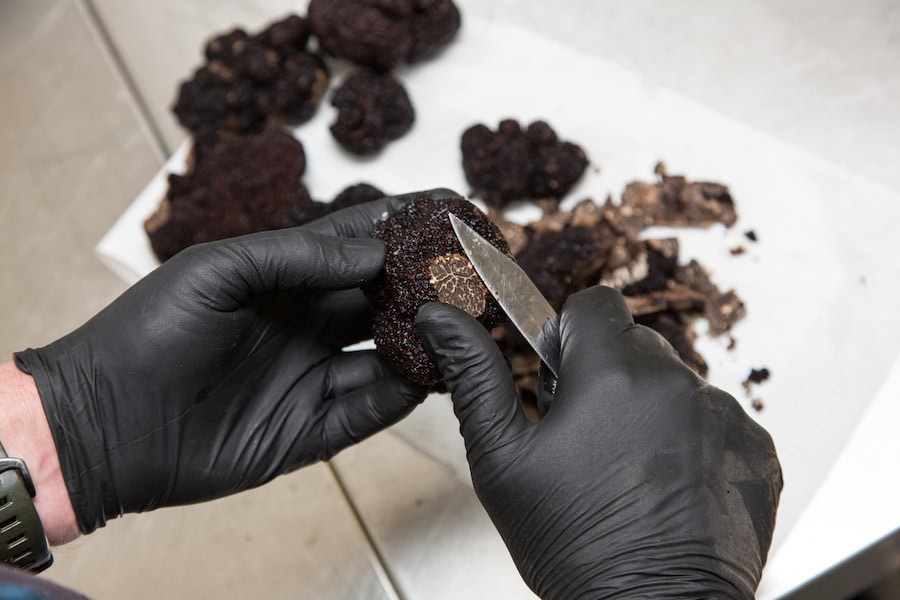
With his retirement plan now looking like a new career, in 2017 Wayne was instrumental in establishing the NSW/ACT Truffle Marketing Cooperative, trading as �EAT Truffle� � an acronym for Eastern Australian Tablelands Truffle. It now has 19 members.
�With my advancing years and an increase yield in our harvests, I needed support, and our youngest son Justin and his partner Sabrina came to our aid,� says Wayne. �Justin is the Course Superintendent of the Yowani Country Club in Canberra and his horticultural background is invaluable to us. Together we run the farm as a business and use contract dogs, supplied by Gillian Cummins of Crookwell, for the harvest in June to August.�
A new generation
About 15 years ago Justin was reading a mushroom growers� newsletter for New Zealand and Tasmanian horticulturalists, when he came across an article on truffles. It was the first time he�d read anything about them.
�Since then I have had an interest in truffles. It was a new thing back then, and there was a lot that wasn�t known about them. Some more information was getting out but there was a lot of secrecy around it all,� explains Justin.
�When you think about it � my job as a horticulturist and green keeper is the opposite to truffle growing. In my trade, we try and kill fungal disease. When it comes to truffles we are trying to promote fungal growth. Although there are plenty of commonalities with my job and truffle growing that work to our advantage � for instance my experience in plant health irrigation, pest and disease control.�
Despite Wayne and Justin being very different people, the father-son dynamic is working well. �Dad tends to overthink things, and I do things on my feet and on the fly,” Justin says with a laugh. �Dad has to have a plan before he does anything, and I like to wing it � see how things go and learn as I do something. I solve problems as I go, and dad has to have all the problems solved before he goes anywhere!�
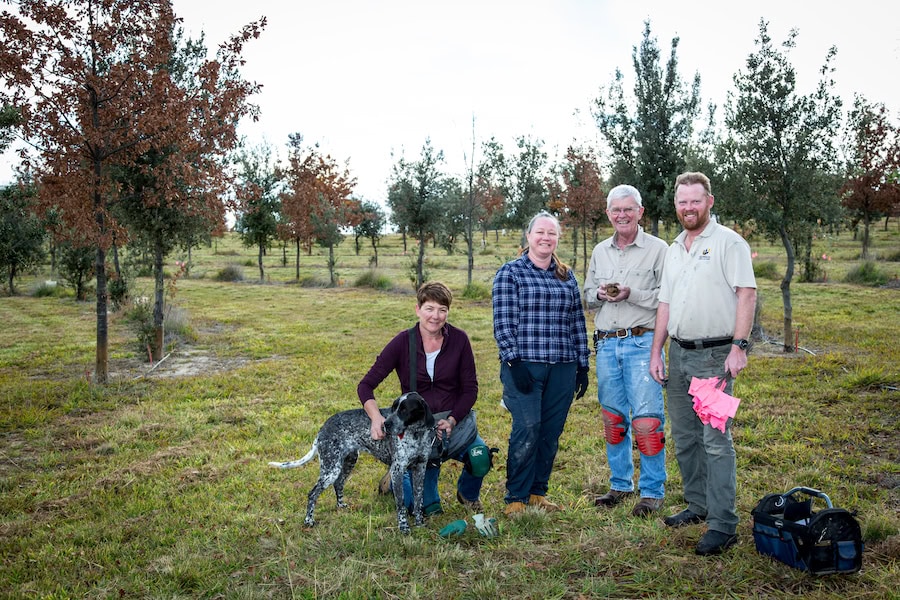
Justin says he doesn�t like to get involved with the business side of things and likes to get on with the labouring work. �Dad likes to do things his way and I support him and the decisions he makes. It goes like this: Dad says we�re going to do it this way and I do it the way he wants it done! That suits me just fine.�
Things at Blue Frog Truffles continue to flourish and now Justin�s brother Damian, who is living in Queensland and works in IT, assists the family with managing the website, while Justin�s partner Sabrina works on social media and marketing.
Sharing is caring
�It�s still a relatively young industry in Australia, and as dad saw right away, people do tend to keep their cards close to their chests,� says Justin. �I think the people who don�t share their knowledge will gradually fade away and then the ones that are left will band together and help the industry to flourish as a whole. If everyone wants to be successful, then everyone needs to work together.�
Justin and Wayne now attend many events, markets, and restaurant demonstrations alongside chefs, where they aim to take the mystery out of truffles � making them more accessible to the average person. The tours on Blue Frog Truffles are also really popular, and both father and son are still involved in The Truffle Festival � Canberra Region.
�When we do talks at the festival or at events we are invited to, we work alongside the chefs and restaurant owners as the growers. We explain to guests where truffles come from, how they grow, and show them how you can easily use them in cooking. I like to educate people and show them that truffles are not scary, and they aren�t just for wealthy people to enjoy. Sure, a kilo of truffle in Australia can cost over $2,000 and that�s expensive, but you don�t need a kilo of truffle at home! With 20 grams of truffle you can feed a whole family a delicious truffle dish.�
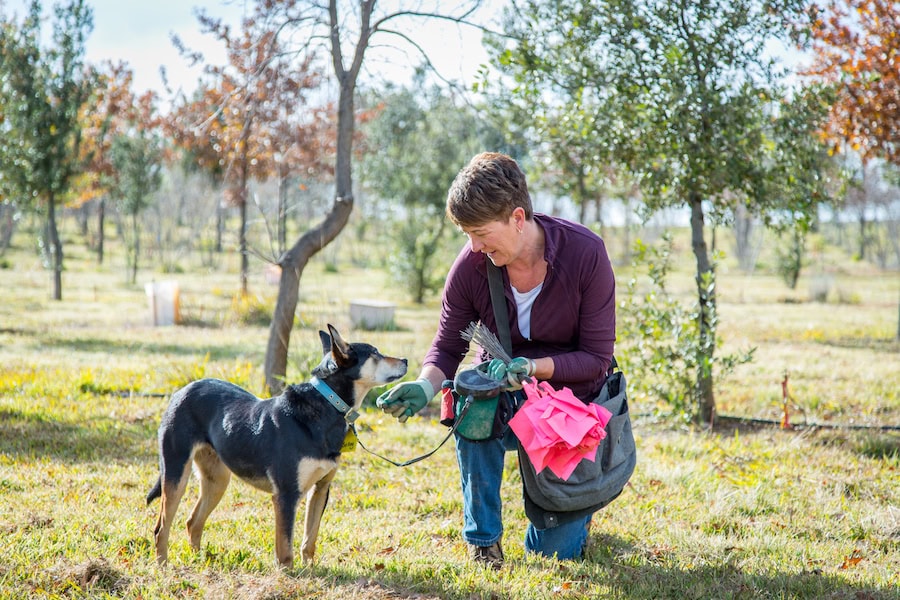
June to August is truffle season, and so across Australia right now, dogs will be busily nosing their way around the base of trees in search of this prized fungus. Wayne explains that it’s a rarity to find a truffle that has broken the ground and is poking out, but dogs are essential to locating truffles.
�They used to use pigs because you didn’t have to train them, but they like to eat them so you lose a lot, or you have to fight for them,� Wayne explains. �Believe me, there are many older European truffle farmers who fought pigs for truffles who have fingers missing!”
Justin still leaves the running of the farm to his dad but is keen to carry on the business when he is needed. �It�s a privilege being able to work as a family without too much pressure on you,� he says. �It�s a great opportunity for me and I reckon I will stick around truffles!�
Wayne feels the same way. �Working with family is always so comfortable,� he says. �You know who you are dealing with, and family members have a sense of commitment and the interests of the business at heart.�
